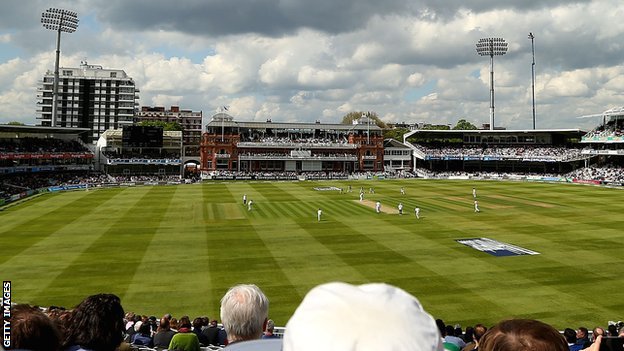Everything You Need to Know About Cricket, But Were Afraid to Ask

What is the quintessential picture of a very British summer? I would hazard a guess that somewhere in your mind’s eye is a hazy vision of that curious game by the name of Cricket.
Cricket? Ah yes, bemusing to the uninitiated yet addictive to those many who follow its course through the season.
The Sound of Leather on Willow, the Clink of Teapots and Cream Teas
 I guess the traditional picture in anyone’s mind is of village greens across the country scattered with cricket teams whilst the tea pots flow in the pavilion; overhanging oak trees casting their afternoon shadows across the scene whilst polite applause from a local crowd sat in their deckchairs wafts on the breeze. Maybe that’s now a bit dated, more Agatha Christie than 21st century, although it is a scene you will still find here and there.
I guess the traditional picture in anyone’s mind is of village greens across the country scattered with cricket teams whilst the tea pots flow in the pavilion; overhanging oak trees casting their afternoon shadows across the scene whilst polite applause from a local crowd sat in their deckchairs wafts on the breeze. Maybe that’s now a bit dated, more Agatha Christie than 21st century, although it is a scene you will still find here and there.
[photo:britishfood.about.com/getty]
But what is this strange game all about? It’s a question I, and colleagues, can often be asked. For, to the innocent bystander, or one on board a coach sighting a match whilst travelling the countryside in summertime, all you see is a bunch of players dressed in white standing in a manicured field, seemingly doing not a lot. Some explanation may be warranted? And thereby stands another challenge:how do you explain cricket?!
From Cricket Whites to Balls and Bails
OK, let’s tackle the basics:
Two teams, 11 per side. The kit, all white. The game is played, yes, on a manicured field; at its centre a rectangle of closely mown grass known as ‘the wicket’ (so closely mown it is hard earth); at either end of this rectangle, three sticks in the ground (the ‘stumps’) with cross pieces balanced across their top (the‘bails’). The edge of the outfield is delineated and strangely enough, is called ‘the boundary’.
The aim of the game is to score as many ‘runs’ as possible and more than your opponents. Anyone knowing us Brits will know that we call a spade a spade, so a ‘run’ is just that: a player’s (batsman’s) run from one set of stumps to the other once they’ve hit the ball bowled to them (who needs bases as per baseball, let’s just keep it simple!). To jump to cricket class level 2 for a moment, hit the ball to the boundary and you gain 4 runs (if ball touches ground on the way) or 6 (if ball crosses boundary through the air without touching the ground). Hey, saves the batsman some running!
Got that?
[Take a look! – Lords Cricket Ground in action during a Test Match Photo:BBC Sport/Getty]
From there, to sketch in the rest, the batting team have two batsmen on the field at any one time. Each stand at either end of the wicket, in front of the stumps. They receive balls bowled to them by the fielding team. They want to score as many runs as possible without being ‘out’; the fielders want to prevent the runs and want to get the batsmen ‘out’.
From a fielder’s perspective your bowlers are there to perplex a batsman, to try and either bowl him ‘out’ (ball hits stumps behind batsman) or to force an error by him (hitting a ball that can be caught by one of the fielders). Like baseball, you do this by changing the speed and style of the bowling (fast, spinners, bouncers) to keep the batsman on his toes. Each bowler has 6 balls at the batsman (an ‘over’); the bowlers rotate and bowl their ‘over’ alternately from each end of the wicket.
Once the fielding team has got all the batting team ‘out’ (bowled, caught etc) then time to switch around; the fielders become the batters, the batters the fielders. Easy, right?
If you’ve got this far, then I guess the only other thing to say (jumping to cricket class level 2 again) is that most matches state how many ‘overs’ are bowled by each side (20, 40, 50 etc). In the big ‘Test Matches’, each team will have two turns at batting and fielding, each batting turn being called an ‘innings’ and hence, why these matches can last for 4 or 5 days a piece! (no time-outs in our sports but with cricket, they do terribly sociable things like stopping for lunch and then, mid afternoon, for tea!)
[photo: ECB]
Of course, in the minds of each team, there are a myriad of strategies for winning – it’s like a big game of chess but played with bat and ball. And it can get strangely addictive as a game inches towards its conclusion and one team is chasing runs; run rates per over being constantly recalculated by player and spectator alike.
From Googlies to Maidens with a Duck or Two Along the Way
Anyone attempting to follow the game will hear terms such as mid on, mid off, silly point, googly, maidens, even reference to a duck. At this point you may feel as though you’re encroaching on an alternative dimension of existence. Just remind yourself that it’s a game the English have invented – it explains it all! When I asked a cricket-playing friend recently about these ridiculously-sounding names, the explanation included the spinning eyes and exasperated tones of someone dealing with a cricketing thicko (me!) as they explained, amongst other things, that ‘silly (mid on; mid off; point)’ is the fielding position just in front/beside the batsman a.k.a. the most dangerous place in the world to be and you’d be SILLY to even think of standing there – it’s obvious! (and yes, hard ball hit at speed by hard wooden bat which, if it connected with your head in such close quarters would kill you or on the chest would likely cause serious injury: pretty darn silly!).
I suppose a footnote to all this is to point out that given who came up with the game (that’ll be us across this side of the pond), it has always been the epitome of fair play and gentlemanliness. So, for instance, if you are unable to finish a game for whatever reason (usually, due to weather!), in the spirit of the game, this will be declared a ‘draw’ regardless of whether or not either team were staring a win in the face. (And hence phrases that have entered our lexicon such as ‘it just isn’t cricket’ for something deemed unfair).
It all makes sense to you now? Excellent. Will someone please then explain it to me?
The Most Important Trophy in the World
Knowing all this, by cricketing magic you’ll also now appreciate that Summer 2013 is a big year for all Cricket fans. The highlight of the summer cricketing calendar is always an International Tour delivering a Series of 4 & 5 day ‘Test Matches’ plusOne Day Internationals. It’s a festival of Cricket for anyone with the slightest interest in the game and, as a spectator heading to one of the matches, an excuse to deck yourself out in fancy dress to try and get on the telly as they do the crowd shots – the more bizarre (bananas, nuns, colouring pencils etc) the greater chance!
This year, the periodic sporting rivalry between England and Australia has taken centre stage as the Australian cricket team are here, touring the UK. Even better, it’s a double whammy with both mens and womens teams here at the same time. This is a friendly and historic rivalry (think colonial past); one of the oldest out there, but a serious one nonetheless. At stake, national pride and that most important trophy of all in the trophy cabinet of Cricket: ‘The Ashes’.
Cast from your minds great towering silver sculptures to be paraded through the streets; cast from your mind some wonderful piece of engraved crystal. For the most famous cricketing trophy in the world, fought over so passionately by England and Australia, is this: The Ashes
[The Ashes in all their glory! Photo: MCC Cricket Museum]
Seriously, this is it! It’s an urn approx four inches high that contains the ashes of a set of bails presented to an english Cricket Captain during a tour of Australia in 1882.
What? Why? I can hear the bemused exclamations. The tour followed closely on the heels of the Australian tour of England in the same year which entered the annals of cricketing history: the first English loss to Australia on English soil. Serious stuff, of course. A joke obituary appeared in a newspaper to mark the ‘death of English cricket’ and noted that the ‘body will be cremated and the ashes taken to Australia’. On the eve of a winter tour to Australia in the same year, the Captain of a touring English team retorted that he was travelling to return with those ashes. Whilst on Tour, he was presented with the Ashes Urn by his hosting Australian counterpart. A private joke is now the centre of national pride for two nations. And no matter who wins them, those Ashes remain…always…at Lord’s Cricket Ground, London (the ‘home of Cricket’) in the MCC Cricket Museum.
[The Captains of England and Australia with the all important trophy Photo: The Guardian]
If you’re scratching your head in puzzlement, simply remember, it’s the Brits and it’s Cricket – it should all then make sense (of sorts).
Chris Relton is an ACIS tour manager from the UK. His passion for travel has taken him through Europe as well as Australia and New Zealand, the Far East, North America and Africa. In 2012, Chris was chosen to work as a volunteer at the Olympic Stadium during the London Summer Olympics Games and the Paralympic Games.













